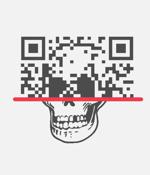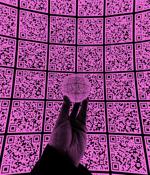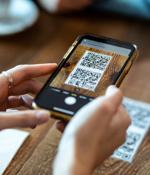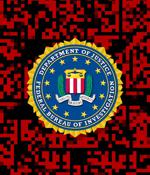Security News

In this Help Net Security video, Security Consultant Kam Talebzadeh and Senior Security Researcher Nevada Romsdahl from Secureworks, showcase SquarePhish, a tool that combines QR codes and OAuth 2.0 device code flow for advanced phishing attacks. If you're at Black Hat USA 2022, you can learn more about SquarePhish.

Chinese web giant Tencent has admitted to a significant account hijack attack on its QQ.com messaging and social media platform. In a post to rival social media platform Sina Weibo - a rough analog of Twitter - Tencent apologized for the incident.

Is there such a thing as moving or animated QR codes? And could they work? The GIF shown below contains an animated QR code with moving frames that some might recognize-a sequence from Rick Astley's famous Never Gonna Give You Up music video.

QR codes have become ubiquitous, driven to even wider use by pandemic concerns. Lots of restaurants now offer their menu through QR codes, sometimes only on QR codes.

They're stealing Citi Bikes by switching the QR scan codes on two bicycles near each other at a docking station, then waiting for an unsuspecting cyclist to try to unlock a bike with his or her smartphone app. The app doesn't work for the rider but does free up the nearby Citi Bike with the switched code, where a thief is waiting, jumps on the bicycle and rides off.

In this interview with Help Net Security, Neil Clauson, Regional CISO at Mimecast, talks about the threats of QR code phishing, explains the vulnerabilities of such technology and how to make sure not to fall prey to such attack. In the case of QR codes being used as a form of payment, the FBI warned that cybercriminals can use tampered QR codes to redirect payments, stealing victim funds for their own personal use.

QR codes have become a go-to staple for contactless transactions of all sorts during the pandemic, and the FBI is warning cybercriminals are capitalizing on their lax security to steal data and money, and drop malware. The smart little matrix bar codes are easily tampered with and can be used to direct victims to malicious sites, the FBI warned in an alert.

"Cybercriminals are tampering with QR codes to redirect victims to malicious sites that steal login and financial information," the federal law enforcement agency said.The FBI said crooks are switching legitimate QR codes used by businesses for payment purposes to redirect potential victims to malicious websites designed to steal their personal and financial information, install malware on their devices, or divert their payments to accounts under their control.

The City of Austin is warning about QR codes stuck to parking meters that take people to fraudulent payment sites.

A new phishing campaign that targets German e-banking users has been underway in the last couple of weeks, involving QR codes in the credential-snatching process. If the embedded button is clicked, the victim arrives at the phishing site after passing through Google's feed proxy service 'FeedBurner.